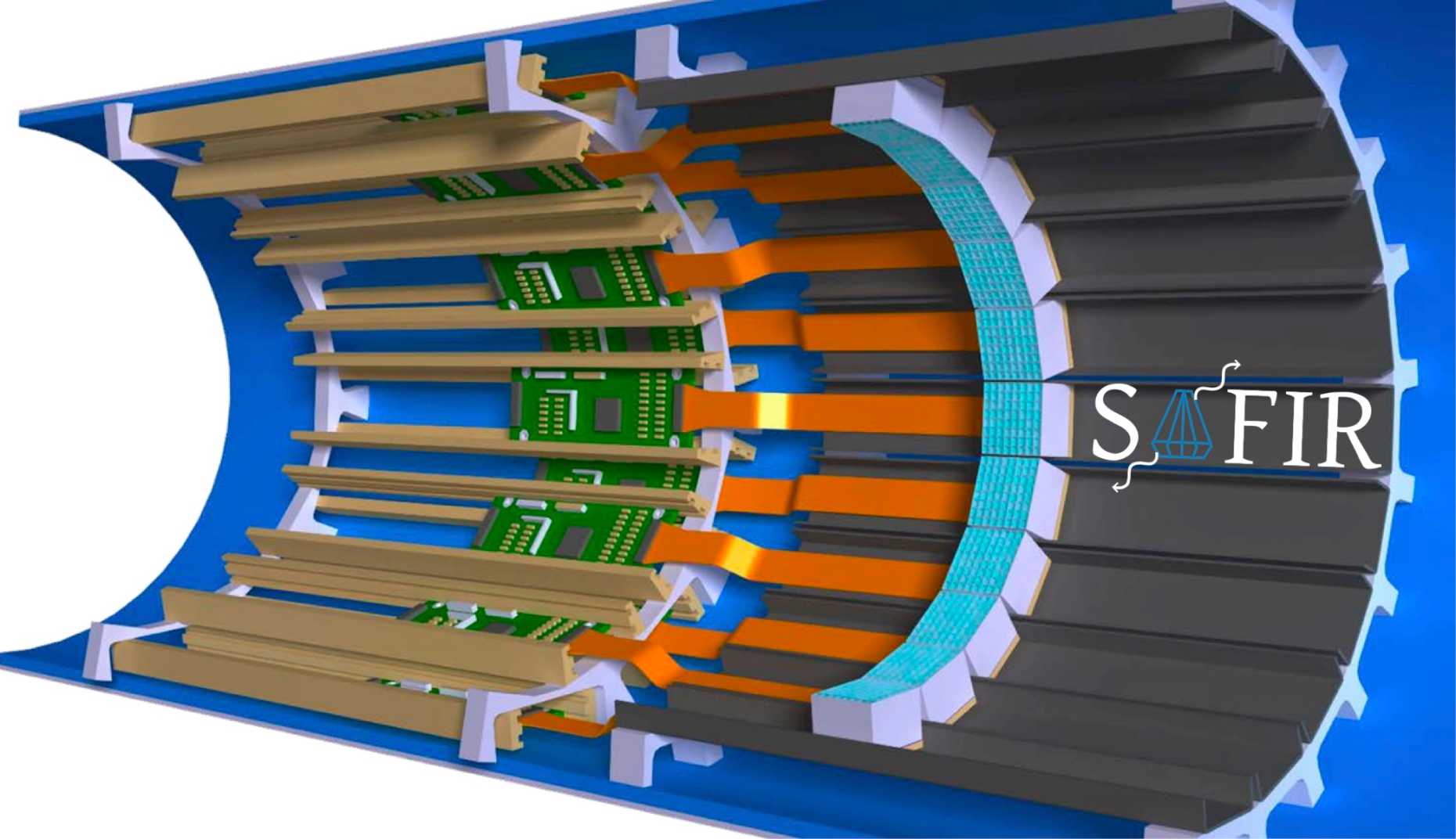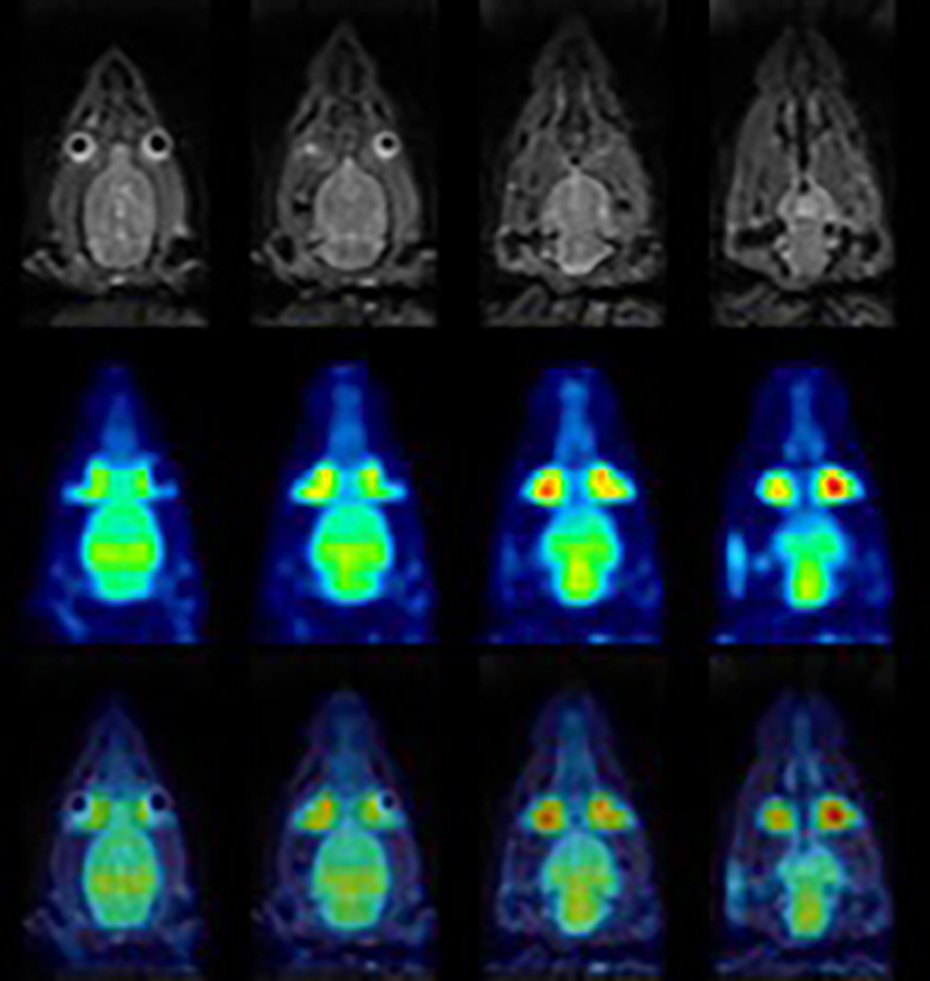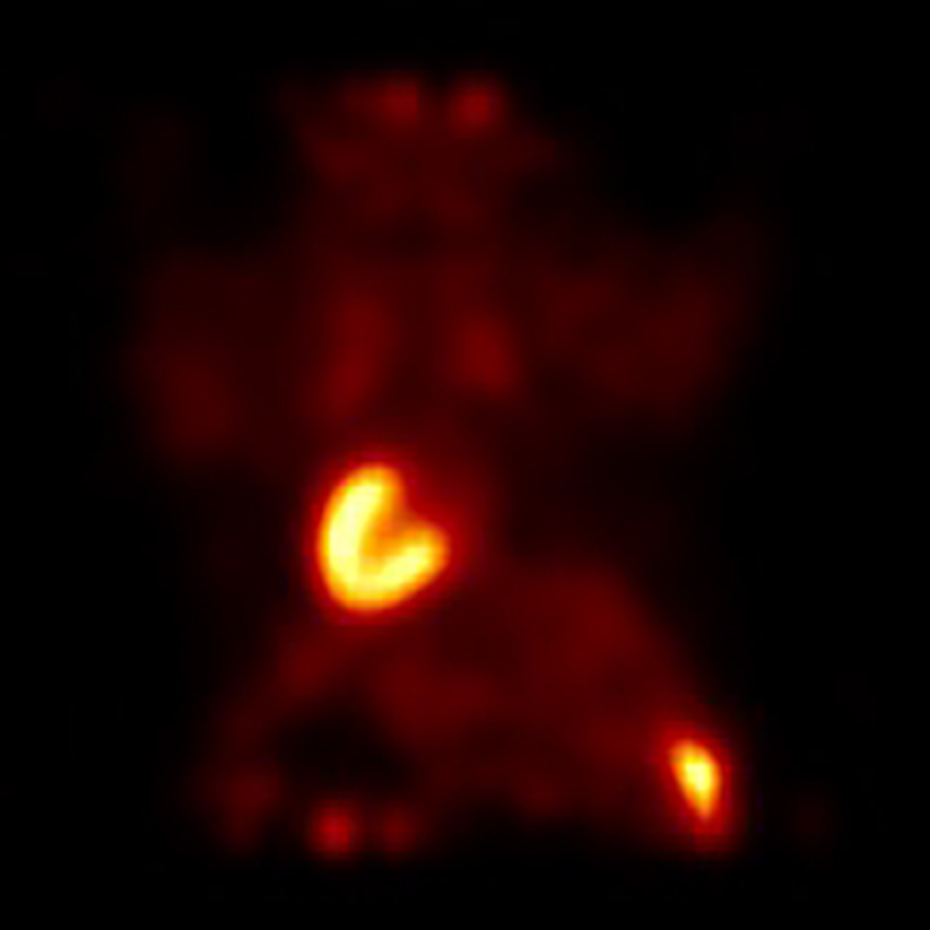The SAFIR Project

Small Animal Fast Insert for MRI
An ultrafast PET insert for a pre-clinical Bruker MRI system
The SAFIR collaboration is developing a PET insert for a commercial Bruker BioSpin 70/30 pre-clinical MRI system. The speciality of this detector will be its unprecedented temporal resolution compared to existing commercial PET systems, permitting image acquisition within a few seconds (instead of minutes) at very high injected tracer activities (~500 MBq in mice).
The interest in such a device originated from the research of external page Prof. Bruno Weber and his group at the Institute of Pharmacology and Toxicology at the University of Zurich, aiming at quantitative kinetic modelling of fast metabolic processes. It relates to the fact that some metabolic processes, such as oxygen perfusion in the brain, evolve on time scales of seconds and not minutes.
We lead the development of the SAFIR detector, by applying our competences in particle detection and particle detector development.
As such, SAFIR is a truly interdisciplinary endeavour. It started off as a collaboration between our group at ETH Zurich, the group of Prof. Weber at the University of Zurich (UZH) and Prof. Rudin, former professor in the Institute for Biomedical Engineering of both ETH and UZH. Today the collaboration also comprises the external page University of Leeds with Dr. Harry Tsoumpas and the Institute of Computer Engineering at the external page University of Heidelberg, led by Prof. Peter Fischer.
In 2019 we have completed the SAFIR prototype detector with 34 mm axial coverage and performed first truly simultaneous PET/MR scans, thus demonstrating the excellent detector performance (see images below). In 2021 we extended the prototype to the SAFIR-I detector, by increasing the axial field of view to 54.4 mm. First in-vivo rat studies at high activities were successfully carried out in June 2021 and published (see the publication: “external page SAFIR-I: Design and Performance of a High-Rate Preclinical PET Insert for MRI”). We continue the construction of the full SAFIR system, SAFIR-II, with ~145 mm axial coverage. 2021 has seen excellent progress with the design and fabrication of most components. We expect the completion of SAFIR-II in summer 2022, followed by first in-vivo studies and detailed performance characterizations.

